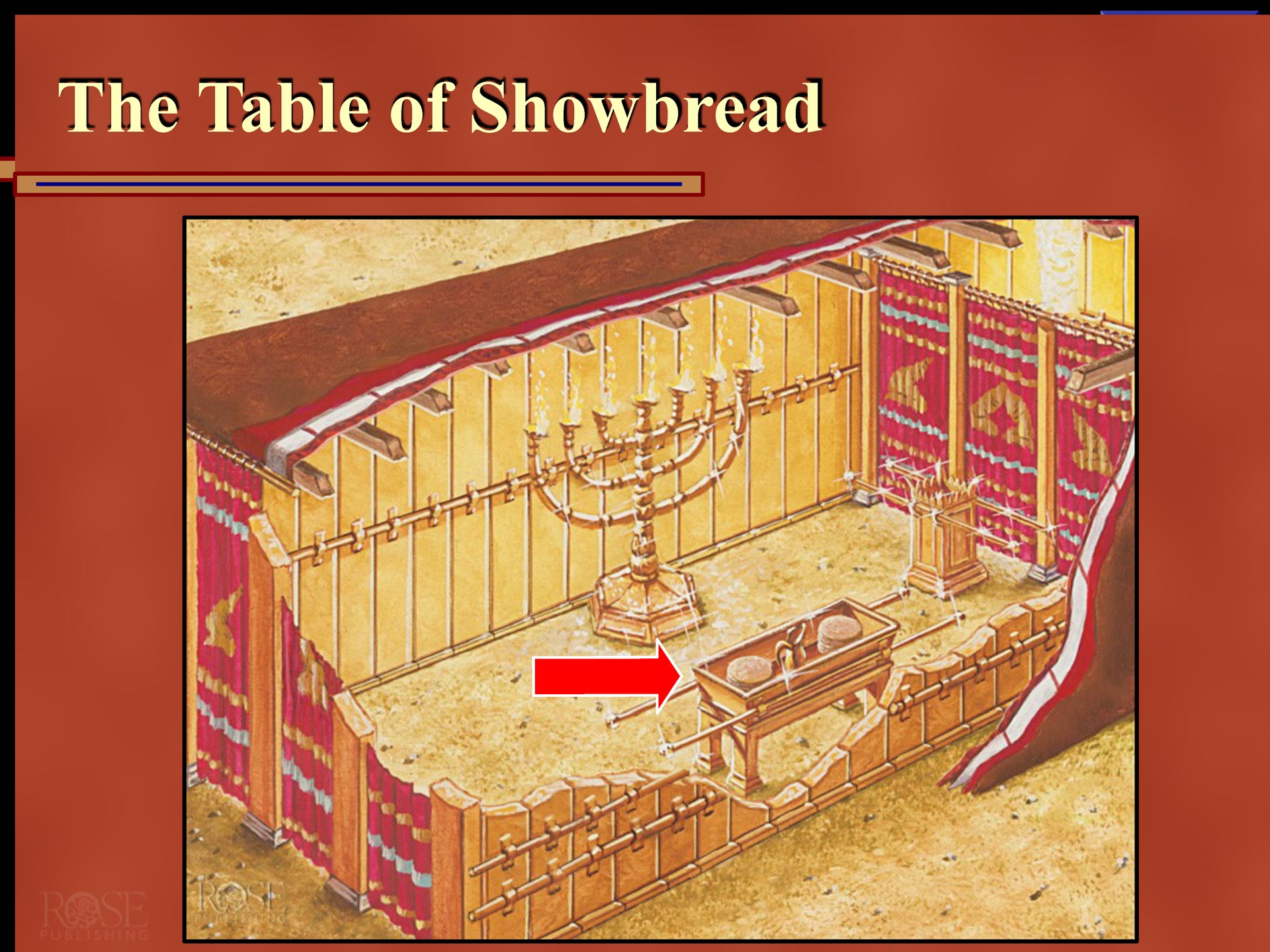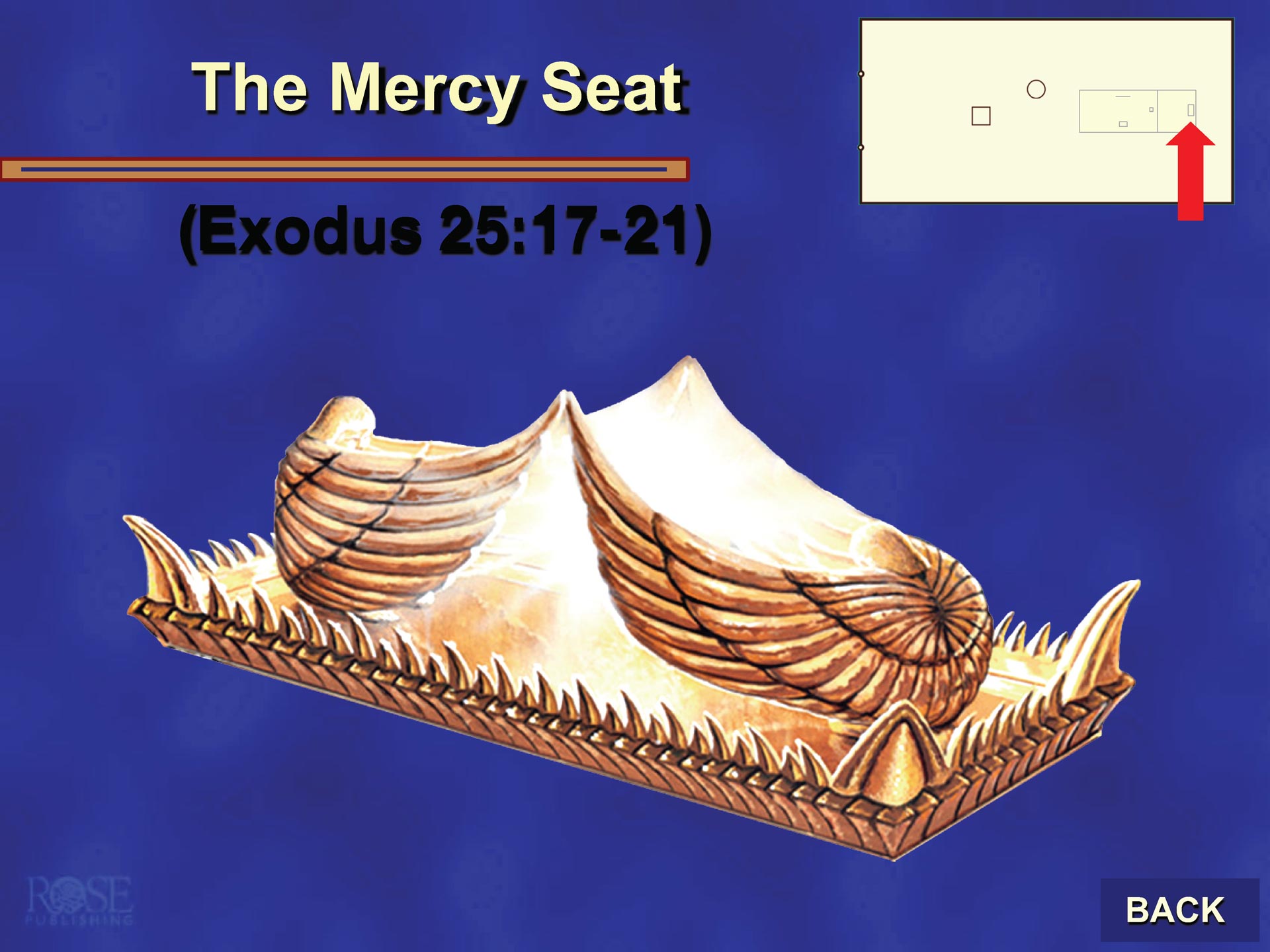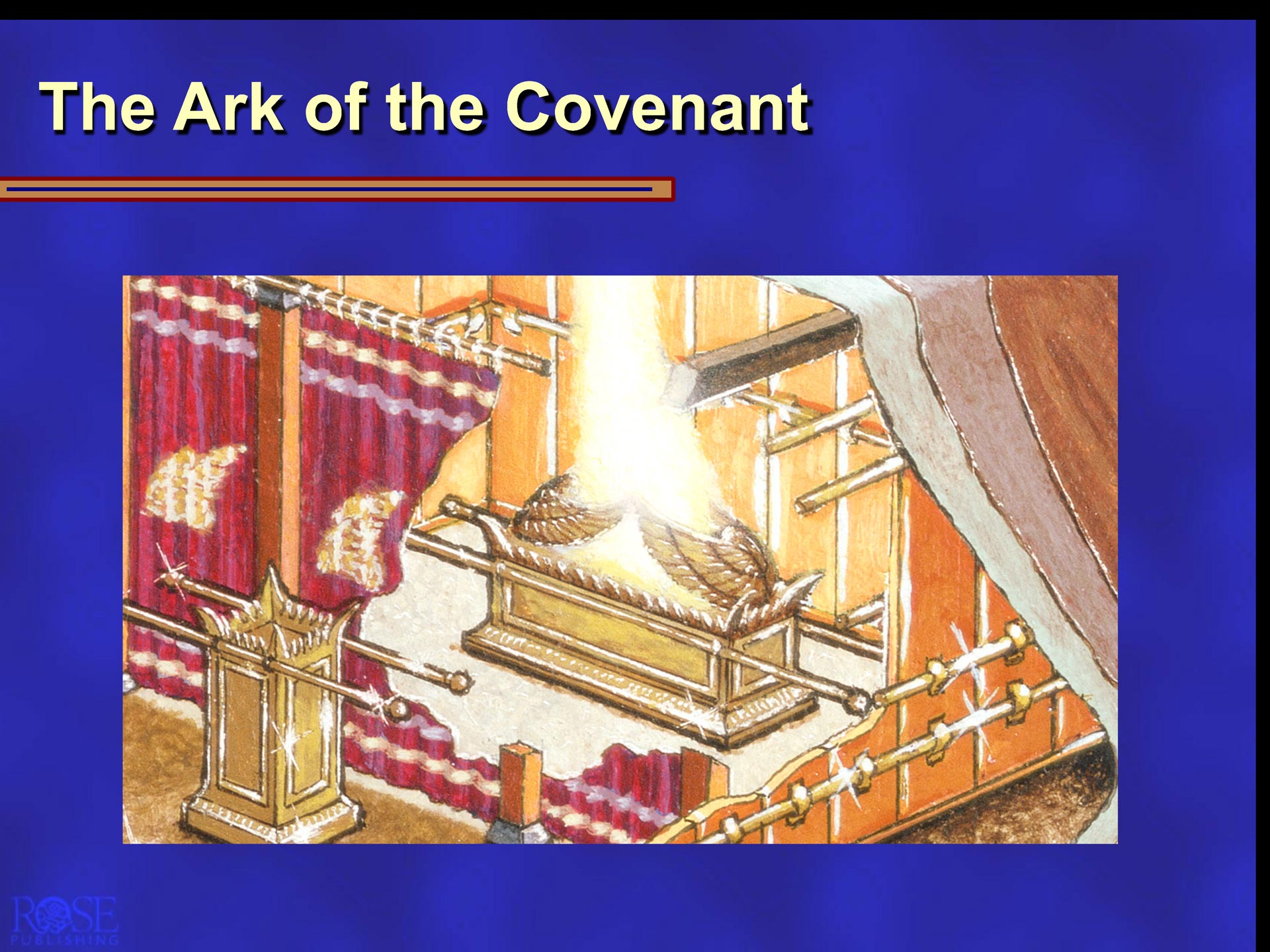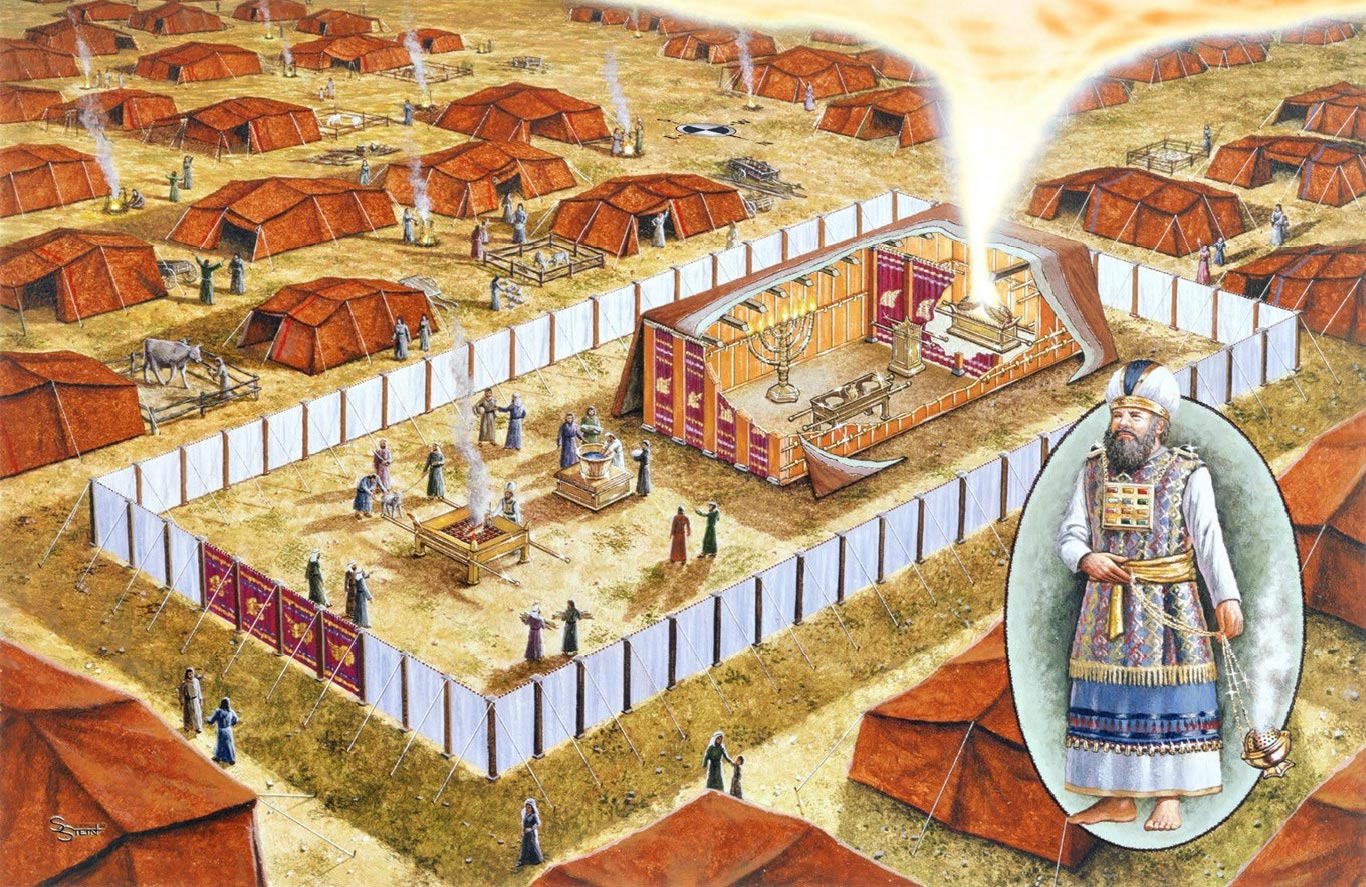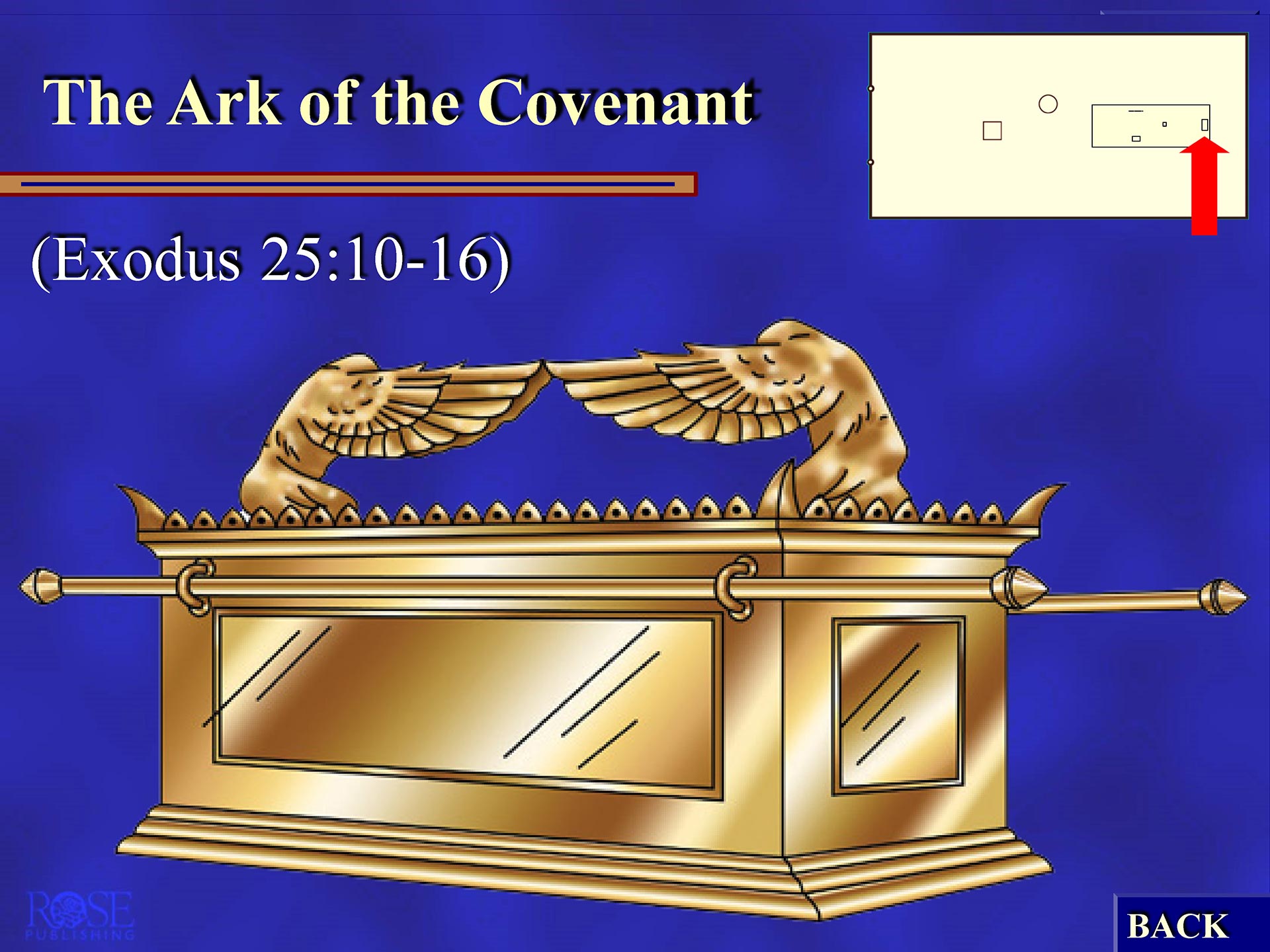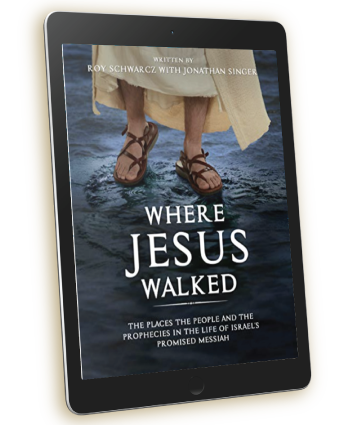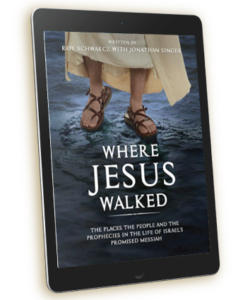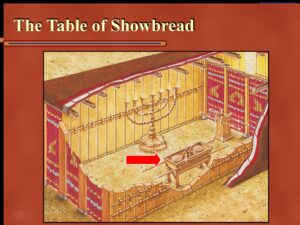
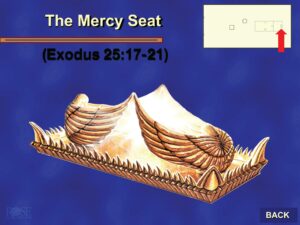
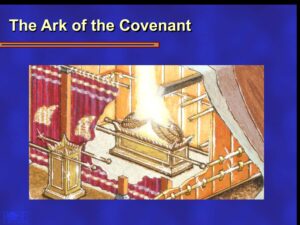
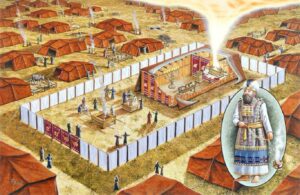
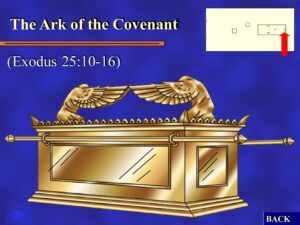
This chapter begins the section of God’s instructions for Israel in how to enter into a relationship with the Living God. The instructions for the tabernacle (25:1-31:18) and the instructions for the procedures (35:4-40:38) make up the majority of the rest of the Book Exodus. The tabernacle was God’s provision to dwell in the midst of his people (25:8; 29:45). The materials, design, and layout of the tabernacle was given to Moses and follows the pattern in the way worship of God is in heaven. signify how Israel is to relate to the Lord, who is both holy and in their midst. Moses is shown how to make it, 25:9. The tabernacle was the to be the portable dwelling place for the Lord in the midst of His people. The Lord was enthroned on the ark of the covenant in the Holy of Holies. The closer items are to the Holy of Holies, the more valuable the metals (bronze silver gold) of which they are made. The tabernacle, like the garden of Eden, is where God dwells. The entrance faces east and guarded by cherubim, the tree of life (lampstand), and the tree of knowledge (the law). The tabernacle was a step picture of paradise, which will fully realize in the new heaven and earth (Revelation 21-22).
Exodus 25:1-3 An offering was to be taken for the construction of the Tabernacle. The resources mostly came from the Egyptians when the Jewish people plundered Egypt on their Exodus. This offering would be the result of a free response from the heart and not external pressure as with taxes or guilt. The willingness of the people was so extensive that they had to be told to stop giving (36:3-7). A similar response occurred centuries later, when King David requested gifts to build the temple (1 Chron. 29:1–9).
Exodus 25:4-7 ‘Blue, purple, and crimson yarns, fine linen, goats’ hair, tanned ram skins, dolphin skins,’ these were the finest fabrics, for the Tabernacle curtains, hangings, and covers, and the priests’ garments. As with the metals, these are listed in descending order of quality, and the material of which an item is made depends on its proximity to the Holy of Holies. The unique colors were manufactured from fluid obtained from murex snails found in along the Mediterranean coast north of Acco (the region of “Phoenicia,” from Greek “phoinix,” “purple,” “crimson”). ‘Dyed sheep or goat leather. ‘Acacia wood,’ for the frame of the Tabernacle, its furniture and carrying-poles is a hard, close-grained, and aromatic desert wood avoided by wood-eating insects. It was considered good for cabinet making and found all through the wilderness of Sinai.
Exodus 25:8-9 Five words in Hebrew are in this verse and contain the simplest, perhaps the strongest statement in Exodus – God would dwell among them if they prepared a place for Him. God did not require it but offered to dwell in their midst as they travelled to the Promised Land. But it had to be made according to the specifications laid out by the Lord.
Exodus 25:10-22 The ark was a rectangular wooden box covered inside and out with gold and was place in the Holy of Holies. It symbolized the Lord’s presence in at least three ways: (1) It was where the stone tablets given to Moses would be placed and served as a witness of the covenant Israel had agreed to. (2) On the annual Day of Atonement, the high priest sprinkled blood on the mercy seat, the ark’s cover, for atonement for the nation (Lev 16:13-15,29-34). (3) The ark was also where the Lord met with Moses and spoke with him (Nm 7:89). God had raised up the craftsmen Oholiab and Bezalel to design and build the tabernacle and its furnishings (Ex 25:10-22; 31:2,7; 35:30-35; 37:1-9). The mercy seat (v. 17) and the two cherubim (vv. 18–20) are to be made of gold and fashioned as one piece and serve as the cover for the ark. The Hebrew word translated “mercy seat” (kapporet) means “to make atonement” and is thus sometimes translated “atonement cover.” It is from above the mercy seat, between the two cherubim that the Lord spoke to Moses (v. 22; Num. 7:89). The Lord is sometimes referred to in the OT as being “enthroned” upon the cherubim (Ps. 80:1;1 Sam. 4:4; 2 Sam. 6:2; Isa. 37:16). Cherubim are the traditional guardians of holy places. The ark of the covenant (Ex. 25:10–22; 37:1–9) was the only piece of furniture in the Most Holy Place; the ark and its contents were kept hidden from view at all times. It contained the two stone tablets of the Ten Commandments. The author of Hebrews adds that it also contained “a golden urn holding the manna, and Aaron’s staff that budded” (Heb. 9:4). The ark was not to be touched by human hands Uzzah learned this the hard way (2 Sam.6:6). Two wooden poles, overlaid with gold, were used to transport it and were not to be removed from the ark. The golden cherubim, which were hammered out of the same piece of gold, had wings outstretched over the mercy seat and faces that looked downward. Ancient illustrations depict cherubim as having a lion-like body, wings, and a human face.
Exodus 25:23-30 Table for the Bread of the Presence is one of three items in the Holy Place (40:4–5); like all the items, its pieces are to be either overlaid with gold or made of it (25:24–26, 28-29). The bread of the Presence consisted of 12 flat loaves of bread, symbolizing the 12 tribes of Israel (Lev. 24:5–9). The table was made of acacia and overlaid with pure gold, was 3 feet long, 1.5 feet wide, and 2.25 feet high. Like the Ark it too had wood poles, overlaid with gold, inserted through the rings of the table for transporting by the Kohanim.
Exodus 25:31-40 The golden lampstand (Ex. 25:31–40) was made of pure gold, hammered out of one solid piece. Resting on a base, the central stem had six branches, three on either side, together carrying seven lamps. The lampstand with its branches was modeled on a flowering almond tree. Hebrews 8:5 repeats that it was a copy of what Moses saw on the mountain. It represented the Light of the Lord that burned always in the midst of darkness that the priests would be able to daily serve in the Holy Place.

